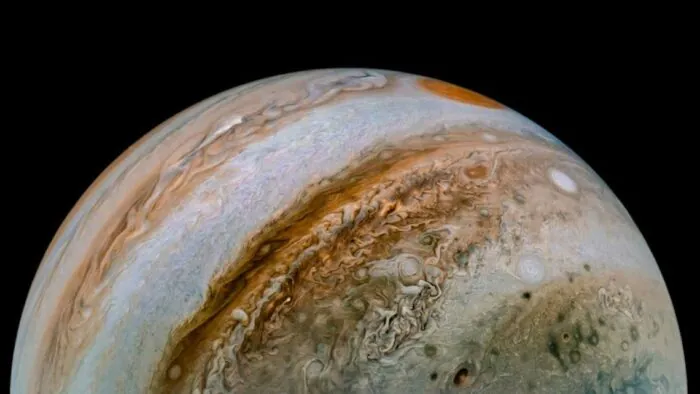© ROOT-NATION.com - Use of content is permitted with a backlink.
Jupiter is almost entirely composed of hydrogen and helium, but also contains heavy metals. According to new research, the content and distribution of metals in Jupiter proves that the planet has absorbed many rocky planetesimals (“baby planets”) in its “youth”.
Since NASA’s Juno spacecraft reached Jupiter in July 2016 and began collecting data, our understanding of Jupiter’s formation and evolution has changed. One of the features of the mission is the Gravity Science tool, which sends radio signals from Juno to the deep space network on Earth. This process measures the gravitational field of Jupiter and tells researchers more about the composition of the planet.
It is known that Jupiter began to form with the build-up of rock material. This was followed by a period of rapid accumulation of gas from the solar nebula, and many millions of years later Jupiter became the giant it is today.
Scientists have two theories of the formation of Jupiter. The first emphasizes that the planet was growing by attaching small cosmic stones, which scientists call “pebbles”, the second says that the increase in Jupiter’s mass was due to the absorption of larger planetesimals, which could have become separate planets in the future.

A new study may answer the question of how Jupiter formed. It is called “Jupiter’s inhomogeneous envelope“ and its main author is Yamila Miguel, an associate professor of astrophysics at the Leiden Observatory and the Dutch Space Research Institute.
Researchers have found that Jupiter’s atmosphere is not as homogeneous as previously thought. Near the center of the planet there are more heavy metals than in other layers and in general the metals content on the planet is 11 to 30 masses of the Earth.
The results of the study indicate that Jupiter continued to build up heavy elements in the composition simultaneously with the growth of its hydrogen-helium envelope. This contradicts the predictions based on the fact that in the beginning the planet increased due to “pebbles”, leading to the conclusion that it is planetesimals that caused its formation or more complex hybrid models.
You can also help Ukraine fight with Russian occupants via Savelife or via an official page of the National Bank of Ukraine.
Read also:
- NASA’s “dead” Kepler telescope has discovered Jupiter’s twin
- Everyone on Earth can watch the Parade of Planets in June


